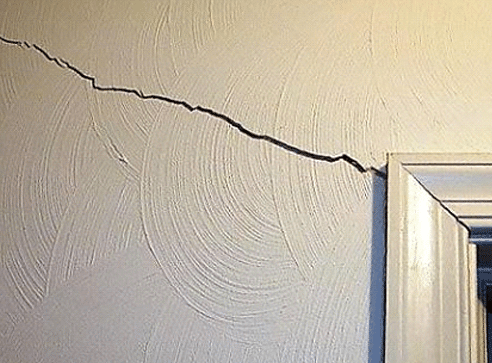Your home’s foundation is perhaps the most important part of your most important asset. If preventing foundation problems and costly repairs is on your list of priorities, being able to identify foundation problems early is key. Here we take a look at what foundation movement is, what causes it and what you can do about it.
What is foundation movement?
All foundations move. The idea that all movement of the foundation is bad is a little simplistic. So let’s make an important distinction. There are two main types of movement that we are concerned with: uniform and differential. Also known as uniform and differential foundation settlement, the difference between the two makes all the difference for your home’s foundation.
Uniform foundation movement occurs when the foundation sinks into the soil at a uniform rate across its length and width. Differential foundation movement occurs when, due to different soil composition or other causes, the foundation of the home settles at varying rates across its dimensions. So, if the north end of the house is built on a soil bed that is more prone to expansion and contraction in the presence of moisture than soil on the south end, the foundation could begin to sink at a faster rate on the north end than the south.
Your home’s foundation is strong, but it is also a bit brittle, and under the stress of differential settlement, a foundation can begin to crack and fail.
As differential foundation movement occurs, signs of differential settlement and other movement issues can start to appear.
Typical signs of foundation movement include two types: Interior and Exterior.
Interior signs are things that can be seen inside the house. Exterior signs are on the outside of the home and even on the foundation itself. Here is a list of things to look out for:
1. Interior indicators of foundation movement

Cracking walls and sheetrock is a common symptom of foundation movement
- Misaligned or out of square doors
- Separation in molding or cabinets
- Cracks in sheet rock, commonly found at corners of windows and doors
- Difficulty opening or closing windows
- Gaps between the wall and ceiling or floor
- Sloping or unlevel floors
- Cracks in tile or gaps between floor planks
2. Exterior indicators of foundation problems
- Cracks in brick and mortar
- Cracks caused by foundation movement in the slab or perimeter beam (1/16 inch wide cracks or narrower are generally not a major structural concern)
- Gaps between windows/doors and exterior siding
- Frieze board separation
- Gaps on either side of the garage door

Homes in Dallas Forth Worth have been known to have foundation issues. There are typical indicators that may appear if the foundation is experiencing movement. Some movement is expected and considered normal. Most cracks and visual signs of movement are cosmetic in nature and will likely vary in severity depending on the season. A licensed structural engineer can help you differentiate between normal foundation settlement and more significant issues that may require repairs.

Recent Comments